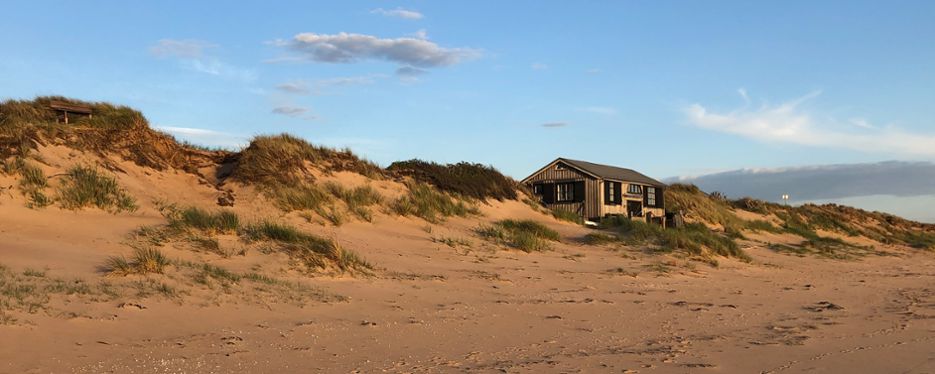Erosion is the wearing down and carrying away of the landscape’s soil and rock, and is caused for example by running water, waves, wind and ice. This is a constant natural change process that forms our landscape. However, erosion can also cause problems for buildings and infrastructure. Additionally, erosion can lead indirectly to landslides along watercourses, rocky coastlines and escarpments.
Coastal erosion
Increased erosion along coastlines means a greater risk of damage to coastal buildings and infrastructure, the spread of contaminants, and impact on areas of natural and cultural value.
As a consequence of higher sea levels in combination with storms, erosion will increase along Sweden’s coasts, particularly in the south of the country where the beaches consist of land that erodes easily. Extensive coastal erosion is already taking place along parts of Skåne’s south coast, where the coastline has moved more than 200 metres inland over the last 40 years in some places. Rising sea levels mean that the sea will reach previously unaffected areas of land, exposing them to erosion.
Increased runoff and flows can lead to increased erosion in watercourses, both on streambeds and in the riparian zone. Ice flows caused by varying water levels can result in increased erosion since ice chafes against the coastline. If material erodes away in the riparian zone, the equilibrium of the slope can be disturbed and a landslide can be triggered.
Land erosion
On land, erosion can occur through wind and water transporting material away. On agricultural land, downpours and flooding can lead to soil being carried away, contributing to losses of phosphorus – for example – from the ground, and to plant nutrients and pesticides reaching surrounding water.
Erosion can also affect roads and railways. For example, under-dimensioned or clogged road culverts result in flooding where the water takes new routes that cause erosion. Internal erosion can occur in road and railway embankments, leading to stability problems. An increased number of zero-crossing temperatures can cause ground frost damage and erosion on ditch slopes. In the worst cases, this erosion can lead to landslides so that the entire road or railway disappears due to undermining.
On escarpments, increased precipitation and downpours can lead to soil material being transported down the slope. In the case of development and various types of forestry measures, such as felling trees, building forest roads and trenching, where the water’s runoff and speed are affected, erosion can increase and lead to more landslides and mudslides.
Wind erosion is limited in Sweden, and mainly occurs in areas that lack vegetation cover, such as along sandy beaches and dunes, and on arable land that is left without vegetation, for example in early spring before the crops have come up, or after harvesting.
Soil that erodes easily
Different soil types have different levels of sensitivity to erosion. The types of soil that erode most easily are well-stocked soil types with a relatively uniform grain size distribution of fine sand and medium sand. Unstocked soil types are less sensitive to erosion. This includes moraine, except for sandy and silty moraine. In unstocked soil types, sand fractions in the shallowest layer of soil can be washed away by waves and water currents, while the coarser fractions are left at the surface. Here, a stone bottom forms which is more resistant to further erosion.
